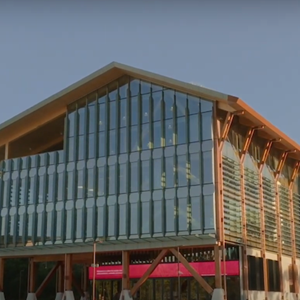All Contractors who are engaged to perform any work on Murdoch campuses are required to complete an online contractor induction. The induction is designed to ensure contractors are aware of the required safety and design standards.
The induction is valid for three years, and provides:
- an introduction to the University
- expectations regarding conduct
- University procedures
- safety and contractor’s responsibilities
- procedures for working in certain situations
- emergency, accident/incident/hazard, reporting
- information about parking on campus and how to arrange a parking permit.
Before arriving on campus
You are required to complete the Murdoch campus induction prior to arriving on site. You need to:
- keep a record of your completed induction somewhere convenient for when you arrive on campus
- ensure any necessary permits to work have been completed.
Upon arrival on campus
When you arrive on Perth campus:
- report to the facilities management reception at Building 436 (between 7:30am and 5:00pm)
- show evidence of your completed induction (must be completed prior to arrival on site)
- complete the site sign in on the tablet supplied.
When you arrive on Mandurah or Rockingham campus:
- report to the main reception (between 08:00am and 4:30pm)
- show evidence of your completed induction (must be completed prior to arrival on site)
- complete the contractor site sign in logbook and collect a contract ID badge.
Resources
All works require a job safety analysis (JSA), safe work method statement (SWMS), and either a Permit to Work or Responsible Officer Checklist to be completed. If you are not sure please ask your Responsible Officer (RO) for direction:
The following types of permit to work are required when carrying out high risk works.
Asbestos Removal
This is for the process of safety removing asbestos or asbestos containing materials (ACM) already identified.
Crane Lift
The process of safely moving loads with slings, hoists, jacks, and other types of lifting equipment in addition to the equipment used to lift and move these loads.
Confined Space Entry and Gas Testing
Any entry into a confined space on University property requires a Confined Space Entry and Gas Testing Permit to be completed before access can be obtained. A gas analyser is a device that detects the presence or absence of gases in an area or confined space. This type of equipment is used to determine a space is safe for human occupancy.
Critical Protection Bypass (Fire Detection/Smoke Alarms)
For any critical protection bypass isolations that will have secondary impact to University business operations, the contractor is required to obtain a Critical Protection Bypass Permit.
Examples include:
- To block out or disable a critical protection device or system so that it will not perform its designed function, e.g.
- fire zone isolations
- smoke detector isolations by use of local covers
- break glass points isolation (e.g. obscured by hoarding during construction).
Electrical – Low Voltage Works and Isolations
The Electricity (Licensing) Regulations 1991 require that electrical contractors submit notices to the relevant supply authority (Western Power) for electrical installation work. This could be a Preliminary/Completion notice sent to the supply authority for substantial works. In addition, Murdoch University must receive an Electrical Safety Certificate for all electrical installation works.
To ensure that the University has a record of all work undertaken on its property, it is required that all electrical contractors forward copies of any notices to the MU Responsible Officer.
Electrical – High Voltage Works and Isolations
In addition to the requirements for low voltage works, a program of HV switching must be provided. Contractors will be issued a separate Permit to access the HV equipment by Murdoch University electricians upon satisfactory completion of the paperwork.
Excavations and Penetrations
An Excavation and Penetrations Permit must be applied for prior to excavations and penetrations commencing. This includes exploratory works.
The contractor must gain approval for all external works via the 'Dial before you Dig' telephone service. Murdoch University service drawings are also available and review arrangements or copies can be organised by the MU Responsible Officer.
Contractors shall not rely upon any drawing documentation being accurate, and they are expected to perform their own due diligence in identifying buried/hidden services before commencing works. Where services are identified at or near an area to be excavated, hand digging only is permitted. No mechanical machinery shall be used in the vicinity of buried services.
Hydraulic Works and Isolations
For any hydraulic works or isolations that will have secondary impact to University business operations, the contractor is required to obtain a Hydraulic Works and Isolation Permit.
Examples include:
- To block out or disable a critical protection device or system so that it will not perform its designed function, e.g.
- fire hydrant systems
- sprinkler systems.
- To interfere with or interrupt business-critical infrastructure, e.g.
- gas mains
- water mains
- fire mains.
Hot Works
Prior to welding or cutting operations which use or generate heat, flame or sparks, a Hot Works Permit must be obtained. This is applicable in/on all University property including on external grounds.
Mechanical Works and Isolations
For any mechanical works or isolations that will have secondary impact to University business operations, the contractor is required to obtain a Mechanical Works and Isolation Permit.
Examples include:
- To interfere with or interrupt business-critical infrastructure, e.g.
- ventilation plant
- temperature controlled equipment
- access equipment (e.g., lifts).
Working at Heights
A Working at Heights Permit is required for all areas where work is being carried out at heights above 1.8m OR where there is a risk to the contractor, staff, student, visitors, or commercial tenants.
Access onto roofs is classed as working at heights. Working in roof voids does not necessarily require a Working at Height Permit unless a specific risk assessment determines it is necessary. The contractor and RO must assess such spaces and determine if a Working at Height Permit is necessary for a particular roof void. For example, heavy works above a gyprock ceiling may present a high risk of harm to occupants beneath in which case a Working at Height Permit is required.
Work
In the context of the Permit to Work process, this is defined as an activity that involves operating facilities, equipment, construction, demolition, IT support, maintenance (hardware), maintenance, inspection, or similar work that has the potential to impact health, safety, efficiency, or reliability aspects of personnel or a facility.
Permit
Written authorisation from the person responsible for the work area, facility, or process to the people requesting permission to perform work.
The permit:
- provides for a review of work activities to appropriately address health and safety concerns
- provides for a review of simultaneous operations in the area or facility where the work will take place
- communicates and documents the scope of work
- communicates the hazards of the area, the work to be done, and the safeguards that are in place to remove or minimise those hazards
- restricts access to work and/or equipment to people who have the appropriate skills and required training and have been informed of the hazards and safeguards of the work and/or equipment.
Permit Revalidation
Confirmation that all the conditions and requirements of an existing permit are still in place after work has stopped for a brief time such as end of shift or an extended break but is requested to be restarted.
Permit Extension
Prolonging the time period for which the permit was originally written.
Stop Work
Procedure that establishes the authority and responsibility of any individual to stop work when an unsafe condition or act could result in an undesirable event.
Competent Officer
A competent individual who has been trained and authorised by Murdoch University (or contractor company) to review and, where applicable, sign and approve relevant forms.
Responsible Officer
A role assigned to a Murdoch University individual who has operational control of the contract and is held accountable for the HES performance of the assigned contract(s). The primary responsibility of a Contract Owner is to ensure that safety requirements of the contract are properly managed.
Work Team Leader
A competent individual who is responsible for the safe execution of work. The designated person may vary, depending on the work specified.
Subject Matter Expert
An individual who displays the highest level of expertise in the specific safe work practice within the organisation.
Simultaneous Operations (SIMOPS)
The situation when two or more work activities present potential safety hazards to personnel due to the close proximity of these activities.
Simultaneous Operations is defined as performing two or more of the following operations concurrently:
- rig operations or rig moves
- construction operations, including electrical and instrumentation
- use of shared road networks
- mobilisation and demobilisation of equipment
- crane lifts
- diving operations
- emergency and/or spill response.
- Audio Visual Standard
- CAD Standards
- BMS Schneider Functional Description Design Guide
- BMS Schneider StruxtureWare Engineering Standard
- Electrical Design Guide
- Environmental Design Guide
- Fire Safety Design Guide
- Hydraulic Design Guide
- IT Network Infrastructure Standard
- Lighting Design Guide
- LV Power Soft Wiring Design Guide
- Mechanical Design Guide
- Metering Design Guide
- Labelling Contents of Pipes
- Landscaping Design Guide
- Security Services Design Guide
- Security Systems Design Guide

